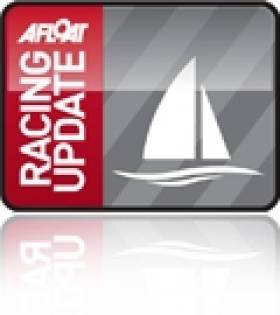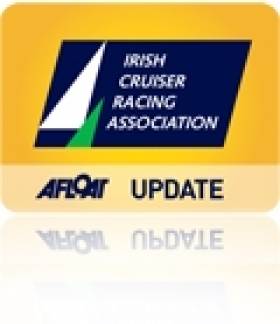Displaying items by tag: Royal St. George Yacht Club
Afloat.ie reported on the Sigma 33 National Championships earlier in the week and now the class association has provided extra details of the ten race series.The format of the event consisted of ten races with 1 discard Included in the ten races series were 2 double points races at race 7 and race 10. There were fourteen entries from six clubs including 3 entries from Northern Ireland and one entry from Kinsale.
The racing was very competitive which was demonstrated by the fact that there were five different boats winning races. The event was wide open to the last race when ‘Tim Goodbody’ in “White Mischief “ from the Royal Irish produced his third 2nd of the day on Sunday in the last race ( a double points race ) to clinch victory by seven points from a visiting yacht ‘Seahawk’ sailed by ‘Clem Mc Elligott’ from Kinsale. In third place, with an excellent performance was ‘Rupert’ Paddy Varian and Dick Lovegrove from the Royal St. George.
All told, competitors were delighted with the weekend and in particular had great praise for the quality of race management under Peter Craig who provided excellent courses in the ten race series.
This morning's opening race of the Liebherr 2010 ICRA National Sailing Championships has kicked off in style on Dublin Bay and although the 120 boat fleet (drawn from 20 clubs) was shrouded in a sea mist for a time race course reports indicate tight racing in southerly breezes of over 10 knots.
Jump Juice in Division Zero damaged her pulpit and at one stage was dealing with a man over board. They have reired from today's racing. A lady crew member from another boat has been brought ashore with two borken teeth.. More updates as we have them. Photos from the race course are on our gallery now.
All classes are underway. Divisions Zero and One have two round the can races, and Divisions two and and three have three windrward leeward races today. the white sail fleets have two round the can races. The fleet is expected back ashore around 4pm.
Photos from this mornings racing by Bob Bateman are already on the Afloat gallery here.
Second Commodore's Cup Team Not Ruled Out
Cruiser Racer insiders say it looks less positive now that ICRA will manage to produce a second Commodore's Cup team for August but at the same time sailing officials have not given up hope yet. Ireland's single team for August all hails from Crosshaven but yesterday there was still talk of a second team forming. "Clearly boats such as Tiamat, Rockabill and Jump Juice would all be likely candidates" said one source. "What's imperative now is a good performance this weekend [at the ICRA Championships] to show that a second team has got the pace" he added.
ICRA Set Championship Venues til 2014
Buoyed up by Friday's bumper entry the forward thinking Irish Cruiser Racer Association is forging ahead with preparations for the next national sailing championships by announcing venues up to four years in advance. Next year the event is heading south to Royal Cork, the second time it will be staged there. In 2012 it will be staged by Howth Yacht Club. In 2013 it will be held at Tralee Bay SC in Fenit and in 2014 it comes back to Dun Laoghaire, to the Royal Irish Yacht Club.



























































